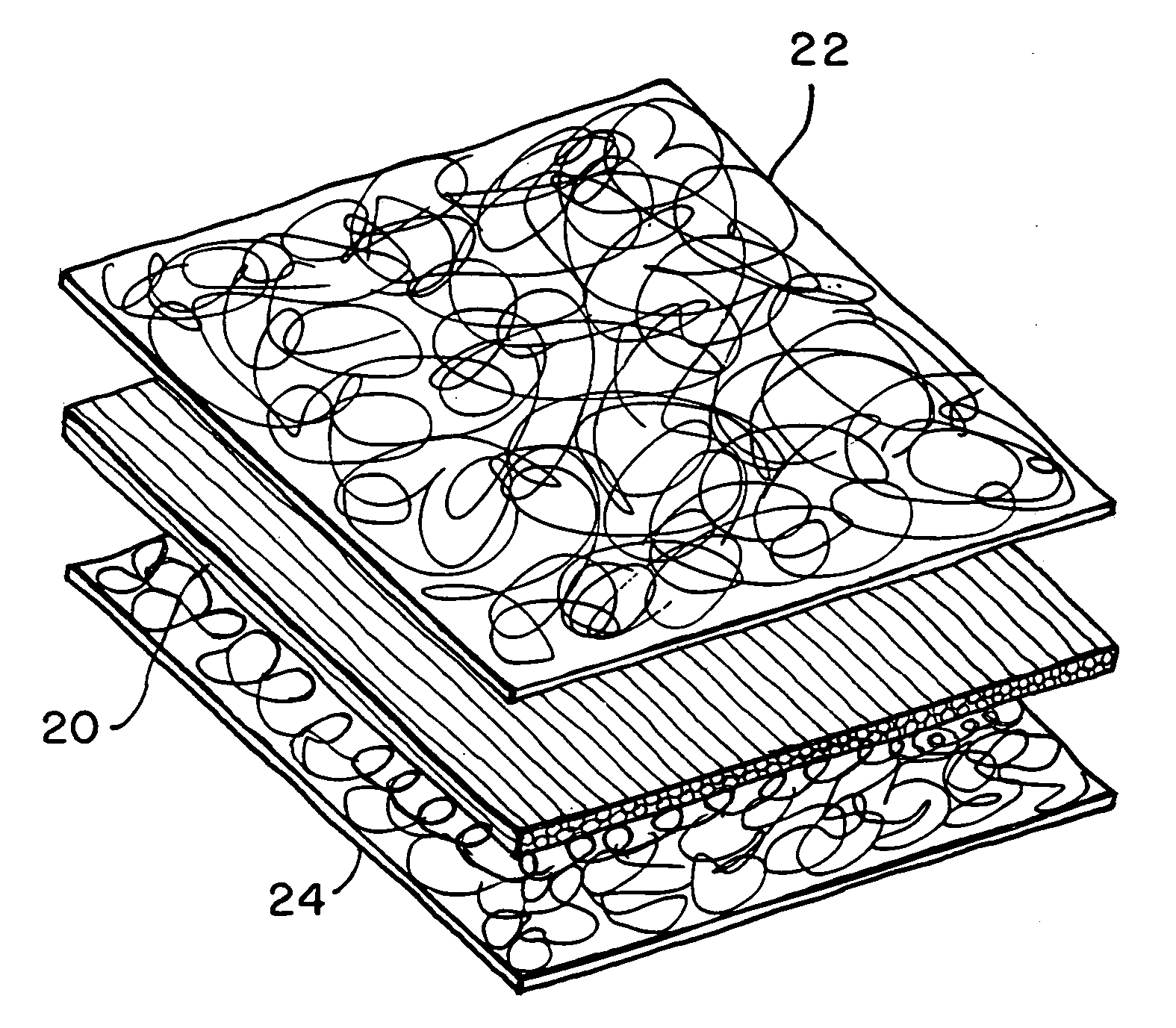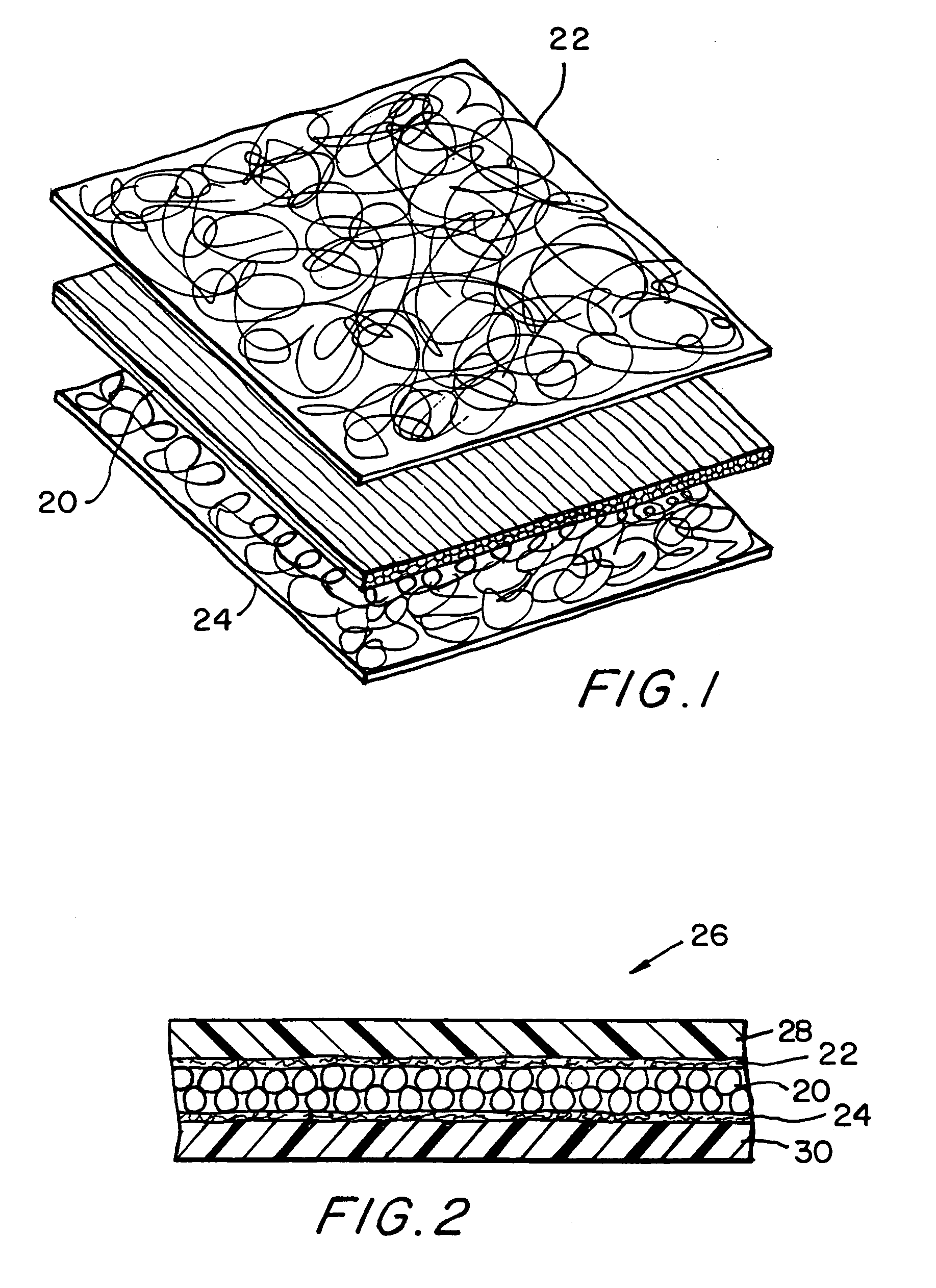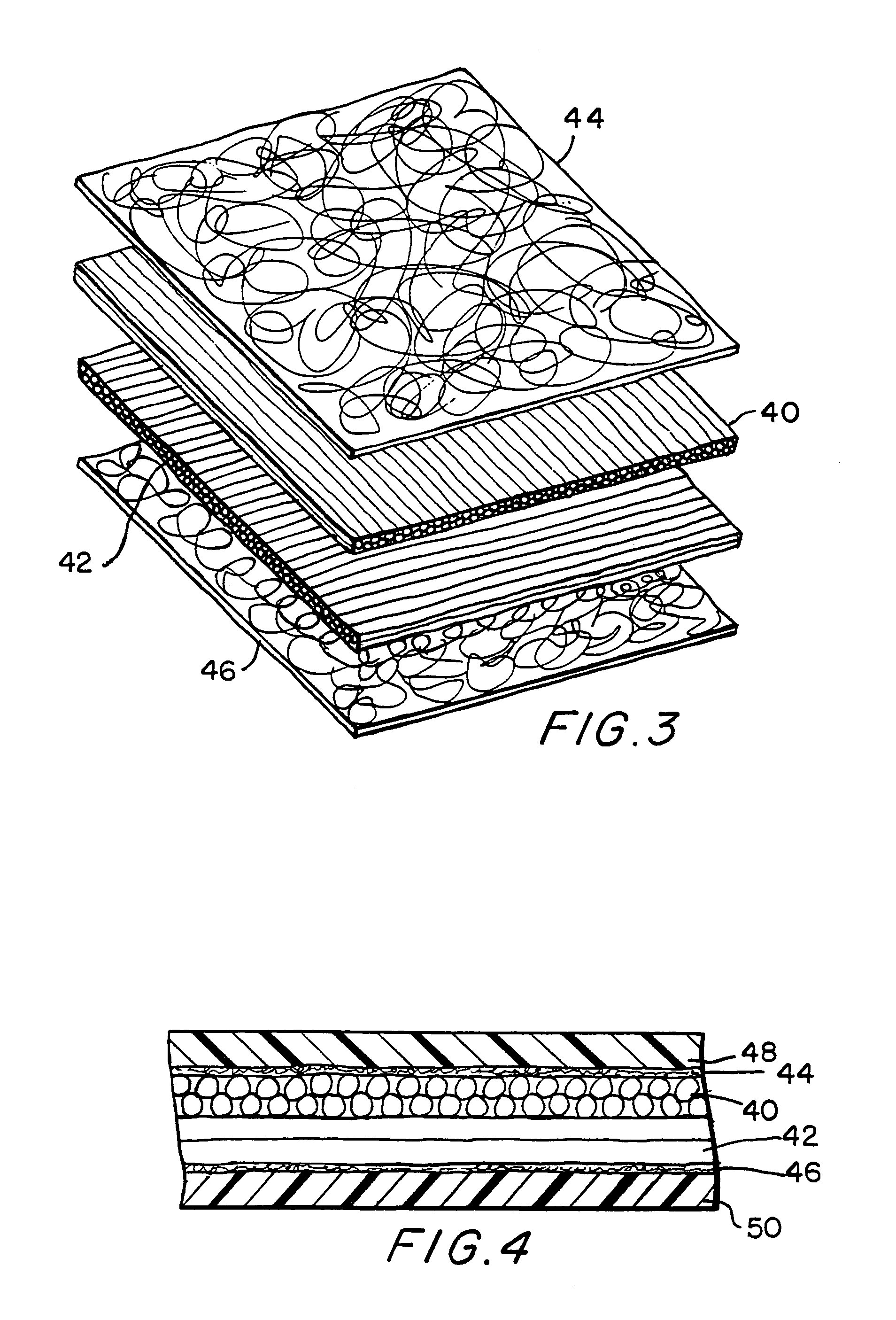Composite carbon fiber material and method of making same
a technology of composite materials and carbon fibers, which is applied in the directions of adhesive processes, weaving, transportation and packaging, etc., can solve the problems of not being suitable for microelectronic applications presently under consideration, and achieve the effect of small thickness and good electrical conductivity
- Summary
- Abstract
- Description
- Claims
- Application Information
AI Technical Summary
Benefits of technology
Problems solved by technology
Method used
Image
Examples
Embodiment Construction
[0022]In FIG. 1 an exploded view of the inventive composite carbon fiber material is shown in which a central layer 20 is formed of aligned carbon fibers that are held together by a plastic matrix. Arranged on either side of the central layer 20 are mats 22 and 24 that are formed of nonwoven carbon. These mats 22, 24 are ultrathin carbon fiber material that is extremely light weight and uniform and is substantially isotropic, because there is almost no directionality of the fibers in the plane of the nonwoven carbon fiber fabric.
[0023]As noted, the nonwoven carbon fiber mat is an ultrathin material and is generally available having a thickness from 0.08 mm to 0.79 mm. In that regard, one commercial source for this nonwoven carbon fiber mat or material is the Hollingsworth & Vose Company, 112 Washington Street, East Walpole, Mass. 02032.
[0024]The composite material is formed as shown in FIG. 2, in which following the arrangement of the mats 22, 24 over the aligned carbon fiber centra...
PUM
| Property | Measurement | Unit |
|---|---|---|
| thickness | aaaaa | aaaaa |
| thickness | aaaaa | aaaaa |
| thickness | aaaaa | aaaaa |
Abstract
Description
Claims
Application Information
 Login to View More
Login to View More - R&D
- Intellectual Property
- Life Sciences
- Materials
- Tech Scout
- Unparalleled Data Quality
- Higher Quality Content
- 60% Fewer Hallucinations
Browse by: Latest US Patents, China's latest patents, Technical Efficacy Thesaurus, Application Domain, Technology Topic, Popular Technical Reports.
© 2025 PatSnap. All rights reserved.Legal|Privacy policy|Modern Slavery Act Transparency Statement|Sitemap|About US| Contact US: help@patsnap.com



